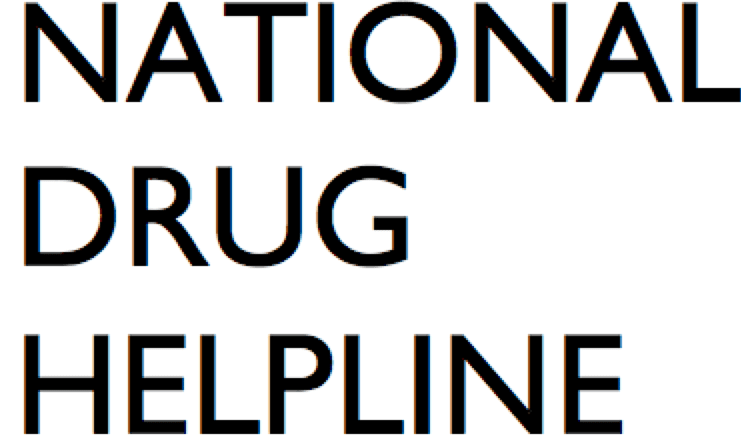Are either you or a loved one suffering from addiction? If so, call our California drug hotline today. We take calls from those suffering from substance abuse all over the state. Whether you live in San Diego, Los Angeles, San Fransisco or Sacramento, we can help.
California Substance Abuse Resources
- Licensed Residential Facilities and/or Certified Alcohol and Drug Programs in California
- SAMHSA California Contacts
- California Department of Health Care Services
- California Drug Law
- California Opioid Overdose Data
Substance Abuse: An Overview
Substance use disorders are defined as a problematic pattern of repeated drug or alcohol use despite health problems and negative consequences, like a failure to meet work and family responsibilities.
Substance use disorders are common in California, with 8% of the state’s residents meeting the criteria for this diagnosis. Even though substance abuse and addiction can be prevented, managed, and treated, it is concerning that only 10% of Californians struggling with addiction receive any kind of treatment.
California has some of the nation’s top-rated alcohol and drug rehab facilities. In 2015, there were 1,004 outpatient, 521 residential, and 30 hospital inpatient treatment facilities in California. The majority (59%) of addiction treatment facilities in California are private non-profits, 29% are private for-profit, and the rest are government facilities.
There are hundreds of physicians offering specialized addiction treatment to California residents. In 2018, there were 446 physicians with certification from the American Board of Addiction Medicine and 232 physicians with certification from the American Board of Psychiatry and Neurology. Substance abuse and mental health conditions frequently co-occur and require dual-diagnosis rehab. [1]
Prevalence of Substance Abuse by Age Group and Ethnicity
Addiction affects people of all ages, socioeconomic backgrounds, and ethnicities. However, in California, young adults (18 to 25 years old) in particular have problems with substance abuse, which occurs in this age group at nearly twice the average state rate.
What’s even more concerning is the fact that substance use is common among California’s youth. When surveyed in 2013–2014, 320,000 adolescents in the 12–17 age group reported using illicit drugs in the past month. [2]Among public school students in California, 4 out of 10 ninth-graders said they had had at least one drink or used drugs at least once to get high. By the time they’re in 11th grade, 50% of high-school students in California have used alcohol and 40% have used marijuana.
There are some striking trends in substance use disorders based on race and ethnicity in California. Alcohol use is highest among Whites and lowest among Asians. Marijuana use is highest among American Indians/Alaska Natives and lowest among Asians. In what is perhaps a reflection of high substance abuse rates among American Indian/Alaska Natives, drug- and alcohol-induced deaths are highest in this ethnic group in California.
It’s encouraging, however, that drug poisoning deaths in California are lower compared to the national average (11.2 per 100,000 population in California compared to 19.7 for the United States as a whole in 2016). Another encouraging trend is the increase in expenditure on addiction treatment, which grew by 5.1% between 2014 and 2020.

California Government Initiatives to Control Drug and Alcohol Abuse
To counteract the growing substance abuse problem, California has undertaken major efforts to expand and improve its addiction treatment services through a program called Drug Medi-Cal Organized Delivery System (DMC-ODS). The program enables greater local control, accountability, and oversight, and resource allocation. It also implements evidence-based substance abuse treatments. As a result, residents of California have benefited from improved access to addiction care and the interactions necessary to achieve long-term recovery.[3]
The Medication Assisted Treatment Expansion Project was started to provide 20,000 California residents with treatment for opioid use disorders and to prevent opioid overdoses. The focus of the project is on under-served populations with limited access to addiction treatment, such as American Indian/Alaska Native communities and people living in rural areas. The State of California committed $90 million from 2017 to 2019 for this project and an additional $69 million per year from 2018 to 2020.
Alcohol Abuse
Mirroring the rest of the United States, alcohol use disorder is more prevalent in California than any other type of substance abuse. Roughly 6% of Californians meet the criteria for alcohol addiction, compared to 3% for illicit drugs.
Particularly concerning is the prevalence of alcohol abuse and addiction in young adults aged 18–25. An estimated 54% of Californians in this age group report alcohol use. Nearly 11% of Californians aged 18–25 have been diagnosed with an alcohol use disorder. Binge alcohol use among young Californians aged 12–20 was found to be similar to the national percentage (roughly 14%) in 2013–2014. [4]
Alcohol abuse leads to a variety of health problems and is also responsible for injuries, accidents, and sexual assaults. In California, alcohol accounts for more non-fatal emergency room visits than all other drugs combined.
In the United States, an estimated 88,000 people die from alcohol-related causes every year. It is the third leading cause of preventable deaths in the US. In California, alcohol-induced deaths are highest in the 36–64 and 65+ age groups and lowest in the 18–25 age group.
The use of alcohol during pregnancy can lead to several complications in the baby, such as fetal alcohol syndrome. [5]In California, 15% of women report binge drinking in the three months before pregnancy. Also, nearly 8% report alcohol use during the third trimester.
There is a need to provide greater access to alcohol addiction treatment to California residents. Between 2010 and 2014, only 7% of California residents with alcohol addiction received the treatment they needed. Of a total of 150,847 admissions to state- and county-contracted substance use disorder programs in 2015, 10% were for alcohol-only abuse and another 11% for alcohol plus a secondary drug.
Opioid Abuse
Prescription opioid abuse has reached epidemic proportions in the United States, and California has been affected by this public health crisis like the rest of the country. The severity of the opioid crisis is evident from the increasing number of opioid prescriptions. In 2018, roughly 500 opioid prescriptions were filled at California pharmacies per 1,000 population. This means that, at the rate prescriptions were filled, opioids could be supplied to more than half of California’s population.
Prescription drug abuse can lead to illegal drug use. In California, 1 in 5 people report that they started illicit drug use by first misusing prescription drugs. Also, 4 out of 5 heroin users report that they previously misused prescription opioids.
People in California obtain prescription pain pills from various sources. More than half of prescription opioid abusers in California get the drugs from friends and relatives, 36% get them from doctors, and the rest from drug dealers and other sources. [6]
Misuse of prescription opioid medications is most common in the 18–25 years age group. Roughly 8 out of 100 Californians in this age group report misusing pain medications in the past year.
In terms of racial differences, opioid abuse in California is most common among Whites and African Americans (16.2 per 100,000 population) and least common among Asians (1.9 per 100,000 population).
Opioid Addiction Treatment
A stark reminder that California is grappling with an opioid crisis is the number of non-fatal opioid-related visits to the emergency department, which increased from roughly 2,200 in 2006 to more than 4,200 in 2017. And while prescription opioid-related deaths saw a downward trend, fentanyl overdose deaths in California increased from 0.3 per 100,000 population in 2011 to 0.9 in 2017 (fentanyl is a synthetic opioid).
Due to the growing prevalence of opioid abuse in California, there is an increasing number of physicians offering treatment services. In 2018, there were 5,821 physicians in California with waivers to prescribe buprenorphine, a drug that is used to treat opioid use disorders. This number was up from 152 physicians in 2002.
Of the total 150,847 admissions to state- and county-contracted substance use disorder programs in 2015, 5% were for opiate abuse.
Unfortunately, opioid addiction continues to claim thousands of lives. Between 2006 and 2017, more than half of all drug overdose deaths in LA County involved prescription drugs, of which more than 70% were prescription opioids.
The total annual expenditure on opioid hospitalizations in LA County increased from $463 million in 2006 to $1.84 billion in 2017, an increase of nearly 300%.
Cocaine Abuse
Cocaine is a powerful stimulant drug that is abused by many Californians. It is reported that 7.2% of Californians in the 18–25 age group abused cocaine in the past year. In 2015, out of a total 150,847 admissions to state- and county-contracted substance use disorder programs in California, 3% were for cocaine abuse.
Heroin Abuse
Heroin is an illegal opioid drug. It is estimated that 0.4% of Californians in the 18–25 age group abused heroin in the past year. Heroin abuse is most common among Whites (19.7 per 100,000 population) and least common among Asians (0.7 per 100,000 population) in California.
The increasing prevalence of heroin abuse is evident in emergency department visits related to the substance, which increased more than three times between 2006 and 2017.
Also, out of a total of 150,847 admissions to state- and county-contracted substance use disorder programs in 2015 in the State of California, 25% were for heroin abuse.
Marijuana Use
California legalized the recreational use of marijuana in 2018. Individuals aged 21 or older can purchase and possess up to 28.5 grams of marijuana.
In what is perhaps a reflection of this increased legal availability of pot, 34% of Californians in the 18–25 age group report using marijuana in the past year.
However, marijuana use can lead to addiction and a host of health problems. [7] This is evident from the fact that out of a total of 150,847 admissions to state- and county-contracted substance use disorder programs in 2015 in California, 15% were for marijuana abuse.
Amphetamine Abuse
Amphetamines are prescription stimulant drugs that are used to treat ADHD (attention deficit hyperactivity disorder) and narcolepsy (excessive sleep). Amphetamine abuse and addiction is a growing problem in California. In 2015, out of a total of 150,847 admissions to state- and county-contracted substance use disorder programs, 30% were for amphetamine.
Last updated: March 9, 2023
References
| ↑1 | California Health Care Almanac. Substance Use in California: A Look at Addiction and Treatment. Available online. Accessed on August 27, 2020. https://www.chcf.org/wp-content/uploads/2018/09/SubstanceUseDisorderAlmanac2018.pdf |
|---|---|
| ↑2 | SAMHSA Behavioral Health Barometer California 2015. Available online. Accessed on August 27, 2020. |
| ↑3 | Department of Health Care Services. Drug Medi-Cal Organized Delivery System. Available online. Accessed on August 27, 2020. https://www.dhcs.ca.gov/provgovpart/Pages/Drug-Medi-Cal-Organized-Delivery-System.aspx |
| ↑4 | SAMHSA Behavioral Health Barometer California 2015. Available online. Accessed on August 27, 2020. |
| ↑5 | National Institute on Alcohol Abuse and Alcoholism. Alcohol Facts and Statistics. Available online. Accessed on August 27, 2020. https://www.niaaa.nih.gov/publications/brochures-and-fact-sheets/alcohol-facts-and-statistics |
| ↑6 | SAPC Data Brief. Prescription (Rx) Opioid Misuse/Abuse and Consequences. Available online. Accessed on August 27, 2020. http://publichealth.lacounty.gov/sapc/MDU/MDBrief/OpioidBriefFinal.pdf |
| ↑7 | NIDA. Is marijuana addictive? National Institute on Drug Abuse website. https://www.drugabuse.gov/publications/research-reports/marijuana/marijuana-addictive. July 2, 2020. Accessed August 27, 2020. |
